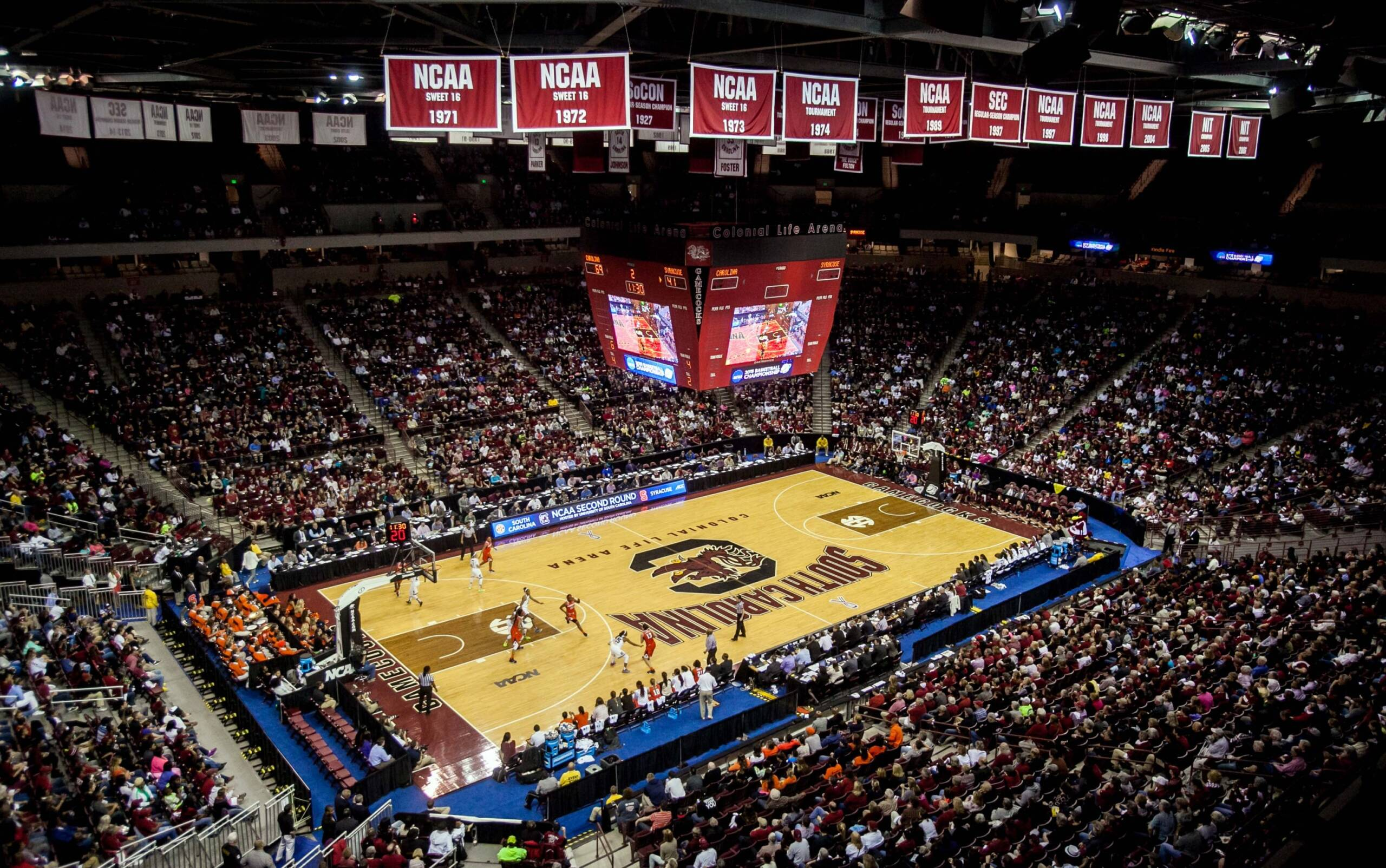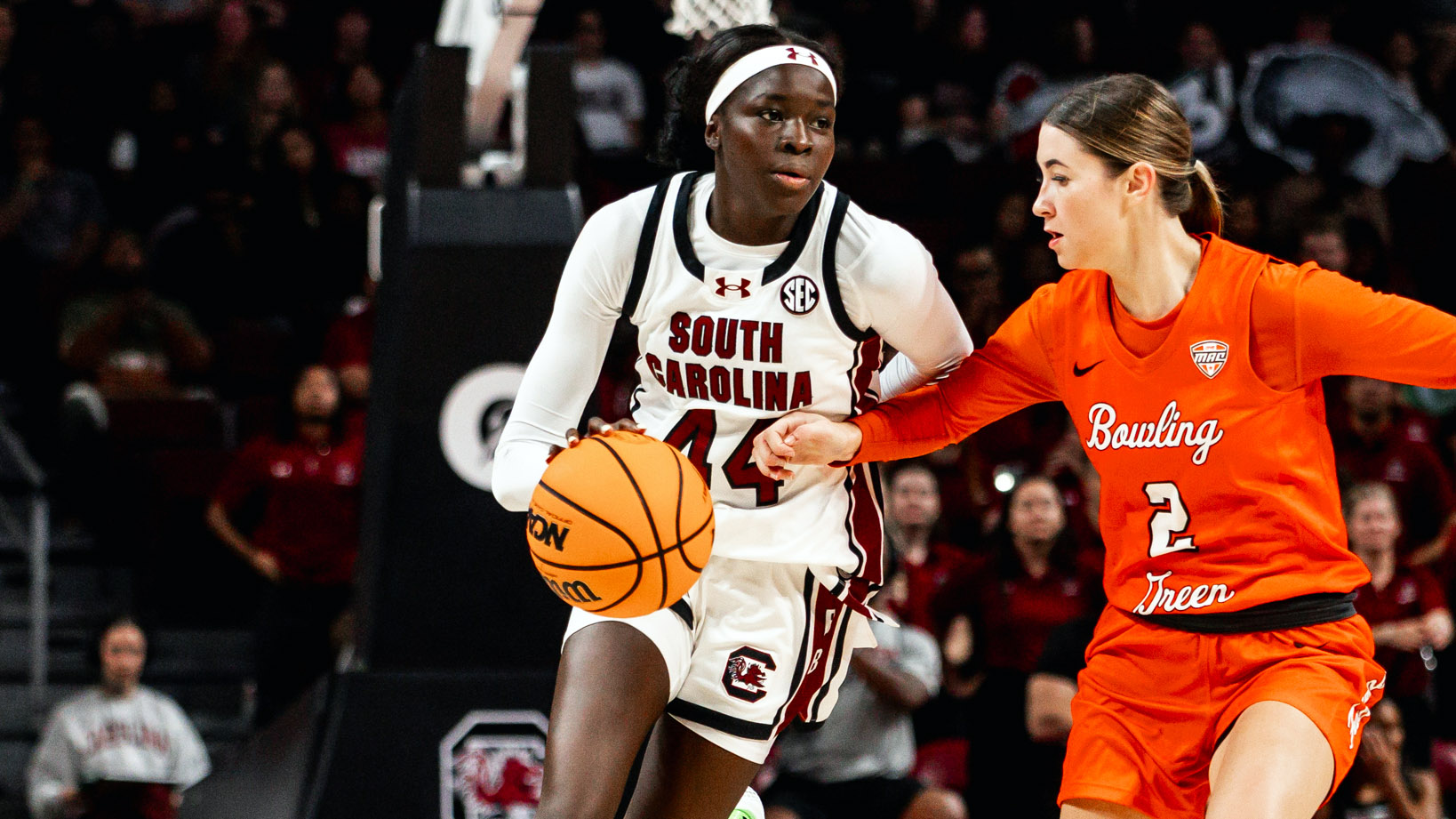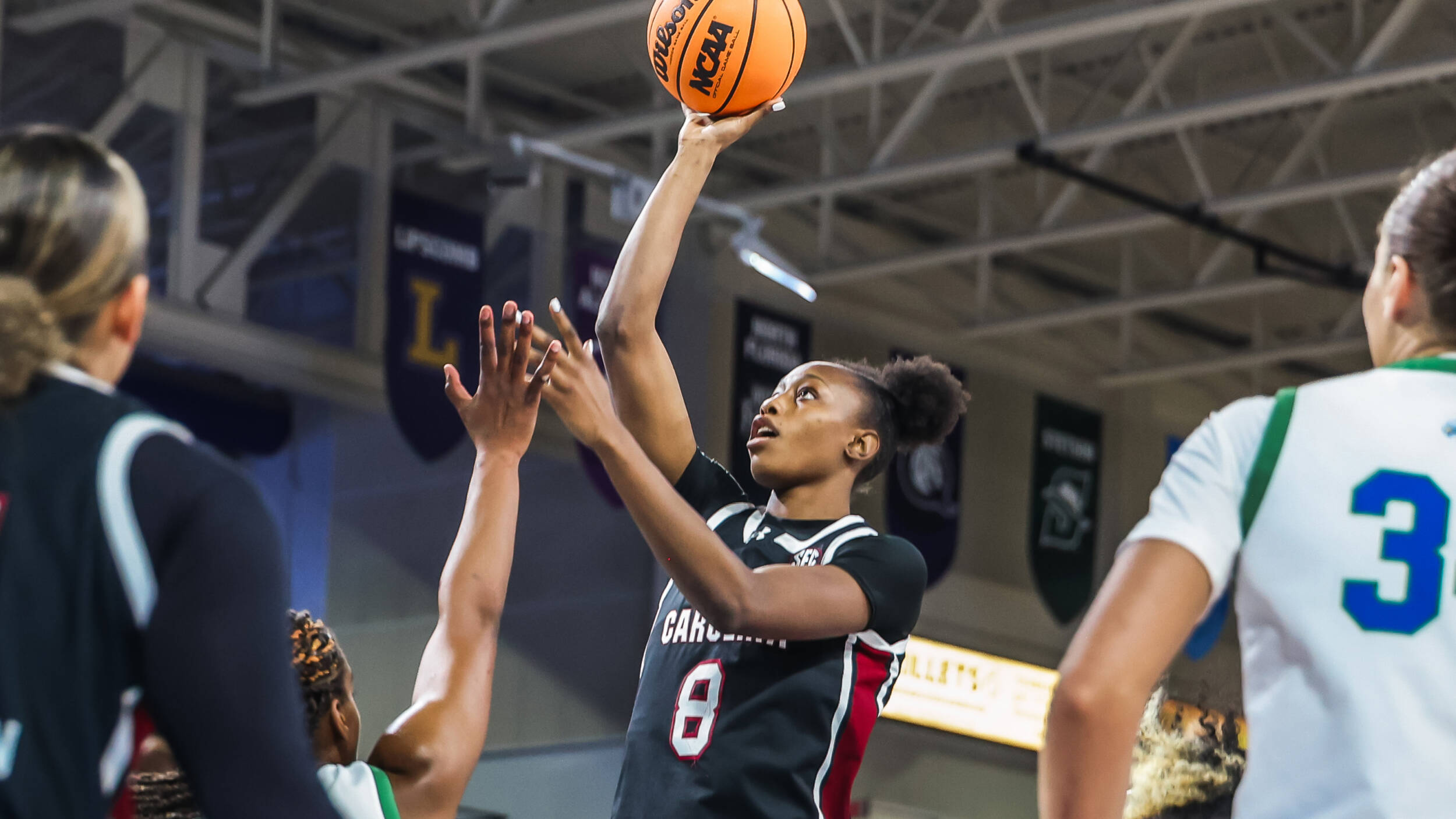
New Rules for Women's Basketball Take Effect This Season
Nov. 10, 2015

Excitement around women’s basketball is at an all-time high at the University of South Carolina, and for good reason. The Gamecocks are coming off their first NCAA Final Four last year while leading the nation in attendance, and they’ve already distributed more than 11,000 season tickets for the upcoming season, which begins Friday at the Colonial Life Arena. While Gamecock fans can tell you everything about their favorite players, there are some new rules to be aware of for women’s college basketball.
4 10-minute periods
2 FT’s on 5th Foul
Fewer Timeouts
Advance Ball Last :59.9
More In-Game Music
“I think the new rules will allow us to play a little bit quicker,” said South Carolina Head Coach Dawn Staley. “I think they will benefit teams that have some depth.”
“The top teams have good strategists, depth and talent,” basketball television analyst Debbie Antonelli said. “If you have depth and you have good players, you will be fine. Teams like South Carolina will be fine. They have depth. They have talent, and Dawn can coach situational offense. Those situational offense things will separate who can coach, and who can’t. I care about offense so I want our game to reflect offensive rules.”
The rules were passed by the NCAA Playing Rules Oversight Panel last summer. The most obvious change is that the game format is no longer two 20-minute halves. The women’s college game is now four 10-minute periods, similar to how professional and international basketball is played.
“With the four quarters, I’m not buying into that being a major change in our game,” Antonelli said. “If the officials stay consistent about the way they call the game, and it’s free-flowing, then I’m a fan of that.”
“Internationally it’s what everyone is doing,” Staley said. “I think everybody is trying to get uniform with what they’re doing.”
Instead of four media timeouts per half under the old format, the new format will have one media timeout per quarter, with another media timeout at the end of the first and third quarter. While there are fewer breaks, those timeouts will be two minutes and 45 seconds as opposed to the 1 minute and 15 seconds breaks taken previously.
“Maybe we won’t go into the huddle as quickly,” Staley quipped.
Another new rule applies to foul shots where two free throws will now be granted on the fifth team foul of each quarter. There is no longer a 1-and-1 free throw, and the foul count resets each period except overtime.
“The two foul shots changes strategy at the end,” Antonelli said. “I’m all about not-fouling, but I’m not sure yet. So at the end of the game, why would you put someone at the line when there is no pressure on that first free throw because you’re going to get a second? I’d be interested in tracking those times in a game where you used to foul someone to put them at the line for a 1-and-1, and how many of them now make the first free throw.”
“I think it’s a great thing,” Staley said. “We’re a team that gets fouled a lot, and we’re team that doesn’t foul a lot. It will allow our free throw shooters to relax because they know they get two shots versus a one and one.”
As long as your product is good, people will come and watch so it doesn’t matter what the rules are.
Debbie Antonelli
An additional change occurs with less than a minute to play in the final period or overtime where a team gaining possession in the backcourt can use a timeout and have the ball automatically advanced to the 28-foot mark of the front court.
“I do like the strategy of being able to advance the ball in the last minute,” Staley said. “I think it puts the onus on coaches to coach, to strategize and to help grow the game in that area.”
“That is exciting,” Antonelli said. “That’s an offensive rule, so I love that. Out of all the new rules, I think that’s the one that can have the greatest impact. You better have some good out-of-bounds plays, and you better be able to save your timeouts so you have the ability to do that.”
Speaking of which, teams will now have one less timeout to call on their own. This year, each team gets four timeouts per game (three 30-second and one 60-second), and only three total timeouts will carry over to the second half.
“With one less timeout, you’re not going to use your timeouts like you did before,” Antonelli said. “You’re going to have to rely on veteran players and good guard-play.”
The in-game experience also gets a tweak as music is now permitted to be played during any dead ball situation as opposed to just during timeouts under the old rules.
“If I’m someone in the gym watching, I’d like it,” Staley said. “I’m thinking, why not add a little flavor to it. We’ll see how it works for us.”
In addition to matching playing rules of professional and international play, there may be other rationales for the changes.

“I think they’re trying to speed the game up, and I don’t know why that is so important,” Antonelli said. “My concern is not whether this will speed up the game, but whether it is going to grow our game. As long as your product is good, people will come and watch so it doesn’t matter what the rules are. I have always believed that it’s product first, before anything else.”
As fans and players adjust to the new rules, Staley and Antonelli already have suggestions for other rules they’d like to see changed regarding the shot clock and the restricted “no charge” lane under the basket, which was widened this year for men’s college basketball.
“I’d like to see the game move to a 24-second shot clock like it is in international play,” Staley said. “The last few years with USA Basketball and being around that pace, it speeds up the game. It puts the onus on players at that point.”
“I would be in favor of it, too,” Antonelli said. “I don’t mind that. We have two restricted areas painted on the floor now. That makes no sense. The men moved theirs out, why don’t the women move it out? We play with the same lane, the same three-point line, and the other dimensions.”
Fans, coaches and players will see the new rules that have been passed in effect on Friday as No. 2 South Carolina hosts No. 10 Ohio State in the season opener.












